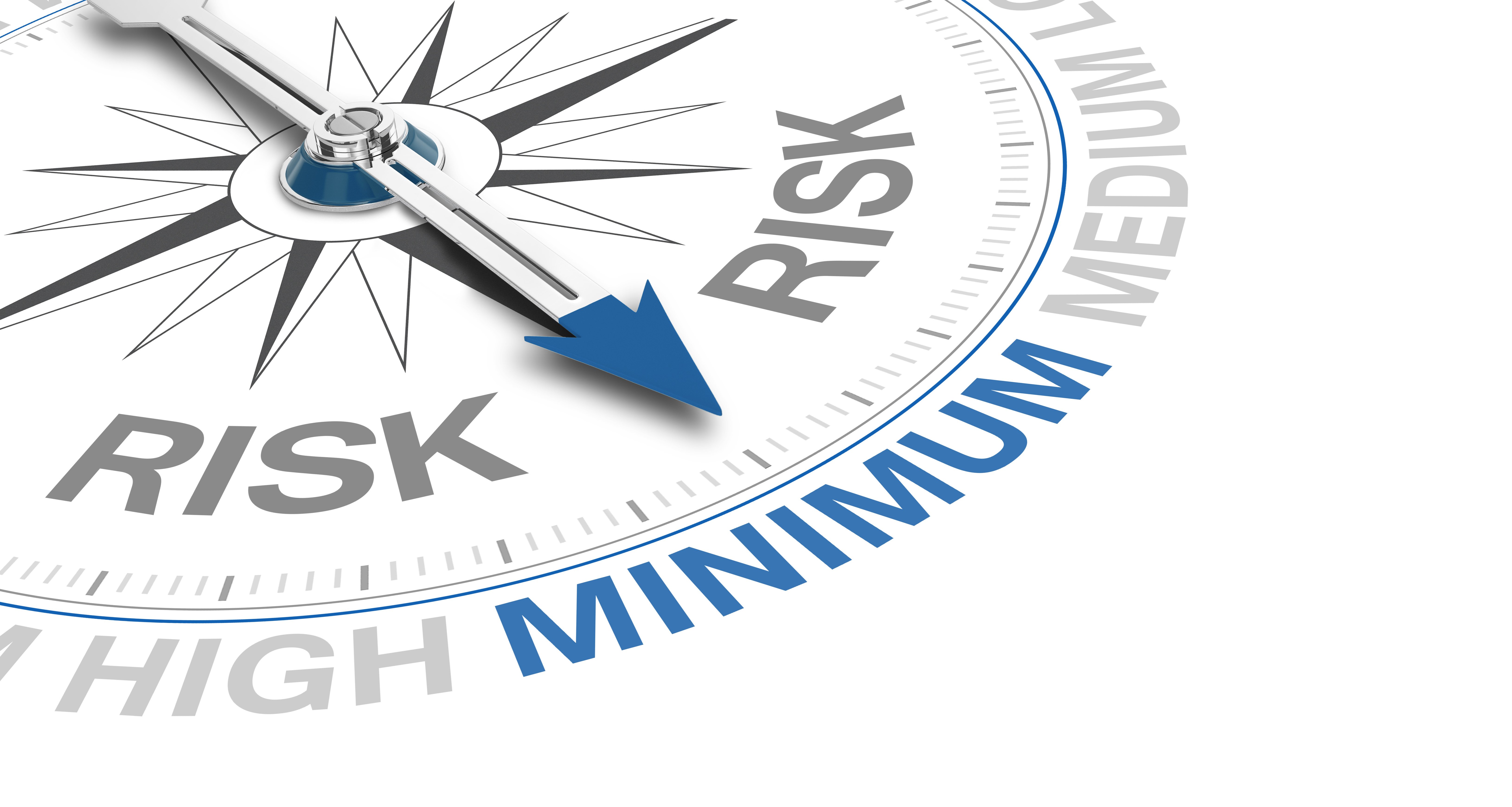Assessing Fourth-Party Vendor Risk
Key takeaways from the blog:

Here is a summary of this blog:
Learn how to manage AI risk in our free whitepaper below!
The reality is stark: your organization is up against a relentless wave of cybersecurity threats, far more than you can feasibly manage.
While new cybersecurity tools can significantly reduce your attack surface, the truth is that achieving zero cyber risk is impossible. And, as your IT environment grows more complex, the challenges will only intensify, making it crucial to have a meticulously crafted and comprehensive cyber risk treatment plan.
So, what exactly is cyber risk treatment, and where did it originate? Cyber risk treatment is derived from what is more commonly known as 'risk response,' a concept rooted in the NIST Cybersecurity Risk Management Framework defined as the task of identifying and implementing a preferred course of action in response to a determined risk.' Essentially, it’s about making informed decisions on how to handle risks once they’ve been identified and assessed.
While the term is scattered throughout the entire risk management process, it is particularly emphasized during the "Authorize" phase. This phase is where the final three tasks—accepting, mitigating, or transferring risk—are carefully evaluated and categorized into a comprehensive treatment plan. These steps are crucial for ensuring that the chosen course of action aligns with the organization’s overall risk tolerance and strategic objectives.
Accepting a risk means that the organization consciously acknowledges the existence of the risk and decides not to take any further action to reduce its impact or likelihood. This decision is typically made when the risk is deemed to be within the organization’s risk tolerance or when the cost of mitigation exceeds the potential impact of the risk. Acceptance might also occur when the risk cannot be mitigated due to technical limitations or when the organization decides that the risk is so minimal that it doesn’t justify further action.
Mitigation involves implementing measures to reduce the likelihood or impact of a risk to an acceptable level. This is often the most proactive approach, involving the deployment of technical controls, such as firewalls, encryption, or intrusion detection systems, as well as administrative controls like policies, procedures, and training. Mitigation is about reducing the potential damage that a risk could cause and is often the go-to strategy for risks that are high in both likelihood and impact. However, mitigation efforts must be balanced with cost, complexity, and potential impact on business operations.
Transferring risk involves shifting the responsibility for managing a risk to another party, typically through mechanisms like insurance, outsourcing, or contracts. For example, an organization might purchase cybersecurity insurance to cover the financial impact of a data breach, or it might outsource certain IT functions to a third-party vendor that specializes in managing the associated risks. The key here is that while the risk is transferred, the organization still needs to manage the relationship and ensure that the third party is adequately addressing the risk. This strategy is particularly useful for risks that are outside the organization's core competencies or where the potential impact could be significant but is better managed by another entity.
Cyber risk treatment plays a critical role in safeguarding an organization's long-term stability and success. It acts as a protective shield for sensitive data and essential operations, helping to prevent disruptions that could cripple a business.
Effective cyber risk treatment also ensures that an organization remains compliant with legal and regulatory requirements. This is particularly important in the financial sector where data protection laws are stringent, and non-compliance can lead to severe penalties. Beyond the legal aspect, demonstrating adherence to recognized standards like those outlined in the NIST framework reinforces an organization’s commitment to security, which is crucial during audits and assessments.
Financially, a well-executed cyber risk treatment strategy can save an organization from the substantial costs associated with cyber incidents. The expense of dealing with a data breach, including the loss of customer trust and potential regulatory fines, can be devastating. Therefore, investing in risk treatment is not just about avoiding threats—it’s about ensuring the organization’s financial health and resilience in the face of an ever-evolving cyber landscape.
Start by articulating the level of risk your organization is prepared to accept in order to achieve its goals. This involves understanding both the potential benefits of taking on risk and the maximum level of risk that can be tolerated without jeopardizing the organization's objectives. Establishing risk appetite helps in aligning risk management efforts with strategic goals and ensures that resources are allocated effectively.
Perform a thorough risk assessment to identify potential threats and vulnerabilities that could impact your organization. The goal is to understand the nature of each risk, how it could affect your operations, and what vulnerabilities might be exploited. This process typically involves gathering data, consulting with stakeholders, and using risk assessment tools and methodologies to provide a detailed overview of the risk landscape.
Translate the identified risks into measurable terms by estimating their likelihood and potential impact. This involves calculating the probability of a risk occurring and the extent of its possible consequences. Cyber risk quantification helps in prioritizing risks based on their severity and likelihood, allowing for more effective allocation of resources. Techniques such as risk scoring, modeling, and scenario analysis can be used to quantify risks in a way that supports data-driven decision-making.
Define the specific criteria and thresholds for what constitutes acceptable risk. This includes setting limits on the amount of risk the organization is willing to take in various areas, such as financial loss, operational disruption, or reputational damage. Risk acceptance criteria are often based on factors such as regulatory requirements, industry standards, and organizational objectives. By establishing these criteria, you can create a clear framework for deciding which risks can be accepted and which require further action.
Assess the quantified risks against your predefined risk appetite and tolerance levels. Risks that fall within acceptable limits are generally considered manageable, while those that exceed tolerance levels require additional mitigation efforts. This comparison helps prioritize risk management activities and ensures that significant risks are addressed appropriately.
Create and implement strategies to address risks that exceed your risk tolerance. This may involve a range of actions, including enhancing security measures, revising processes, transferring risk through insurance or third-party agreements, or implementing contingency plans. The goal is to reduce the likelihood of risks occurring or minimize their impact if they do materialize. Effective risk mitigation strategies are tailored to the specific nature of the risks and are designed to reduce their potential threat to an acceptable level.
Utilize the insights gained from the risk assessment and mitigation strategies to make informed decisions. This involves considering how each decision affects the overall risk profile of the organization and aligning it with the established risk appetite and tolerance. Risk-based decision-making ensures that actions are taken in a way that supports the organization’s objectives while managing potential downsides effectively.
Continuously monitor and reassess your risk management practices to ensure they remain effective in the face of changing circumstances. This includes conducting risk assessments, updating risk appetite and tolerance levels, and revising mitigation strategies as needed. Regular updates are crucial for adapting to new threats, changes in the organizational environment, and evolving regulatory requirements.
Cyber risk quantification enhances risk treatment by providing a clear, data-driven view of risks. It enables organizations to prioritize their efforts on the most critical threats based on their potential impact and likelihood.
By quantifying risks, decision-makers can more accurately evaluate the cost-effectiveness of various mitigation strategies and allocate resources efficiently. Additionally, this approach also improves communication with stakeholders by offering a transparent basis for risk management decisions, leading to more effective and targeted risk treatment.
At Rivial, we use Monte Carlo statistical analysis along with real-world breach data to accurately measure your risk in financial values. Schedule a call to see how our platform can run a per-system risk assessment in a matter of minutes.
Learn how to manage AI risk in our free whitepaper below!
 Read More
Read More

{% video_player "embed_player" overrideable=False, type='hsvideo2', hide_playlist=True, viral_sharing=False, embed_button=False, autoplay=False,...

Here are the key takeaways from the blog: Advanced techniques streamline IT risk assessments: The firm's innovative approach reduces client effort,...